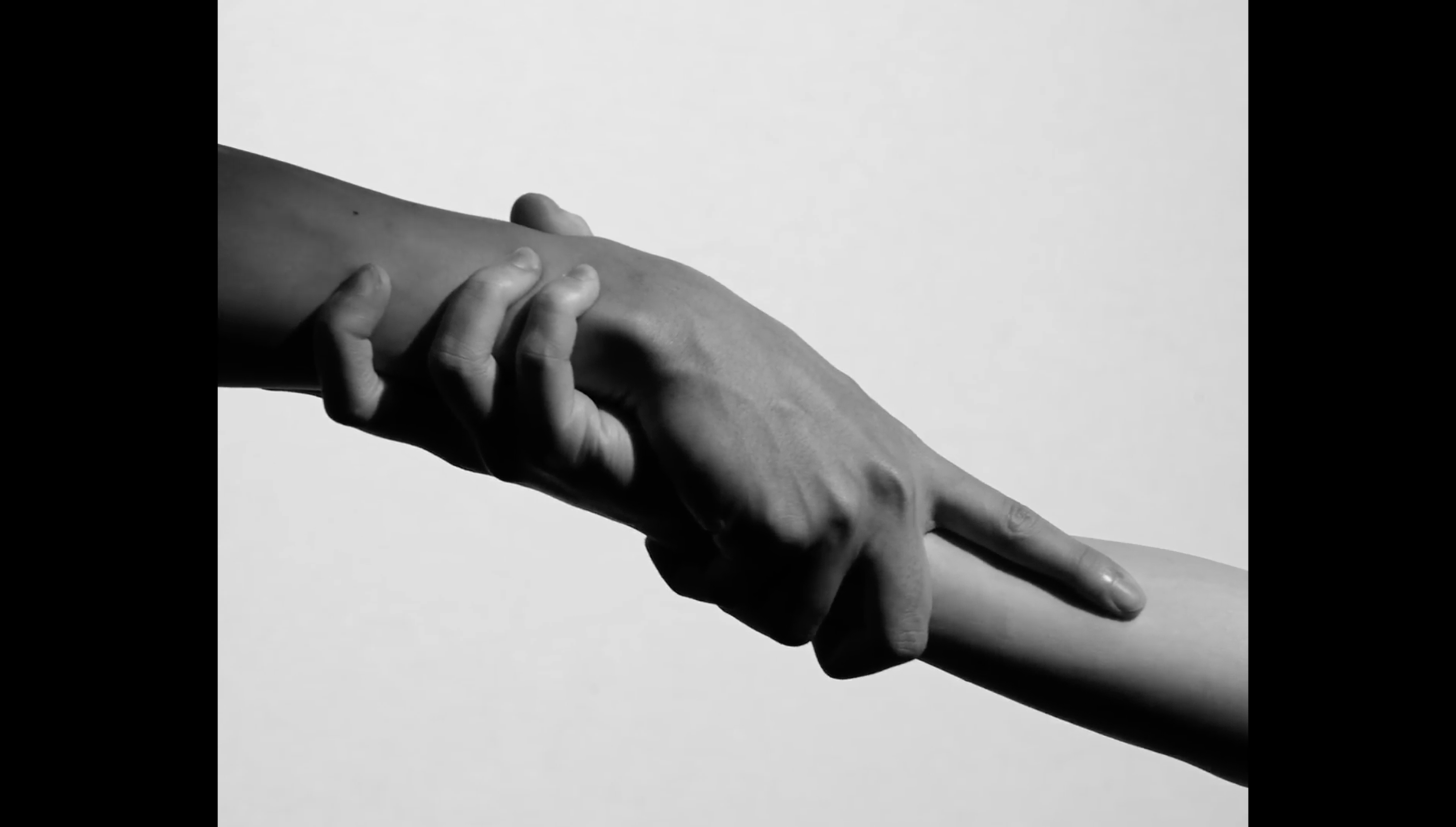Among all the films I have watched during the internal screening, to name but just a few, OO is one of my favourite films. Unlike usual romantic stories, OO is not a narrative drama; instead, it is more likely an experimental film. The director chose the black and white tone, beginning with some snapshots of the character’s body, presenting a silhouette-like style, which made the audience focus more on the emotion between the two men. OO started and ended with a scene of a man hugging himself while sitting on a bed; this created an echo from end to end and showed a contrast between the start and the end of their relationship as the two of them are on the same bed in the first scene. However, only one is left at the end – meaning no matter whether the other side is here or not, the one left behind in this relationship can only love himself.
Another fascinating point is that OO’s director chose to use a theatre way of storytelling. The main character brings the audience around his dream of memories, just like moving around on stage. Combined with the excellent sound effects design, the water droplet sound on a close-up tearing shot brought the audience into empathy and sympathy.
Obviously, OO created an atmosphere which made us aftertaste with its film form, frame, lighting and audio design.

